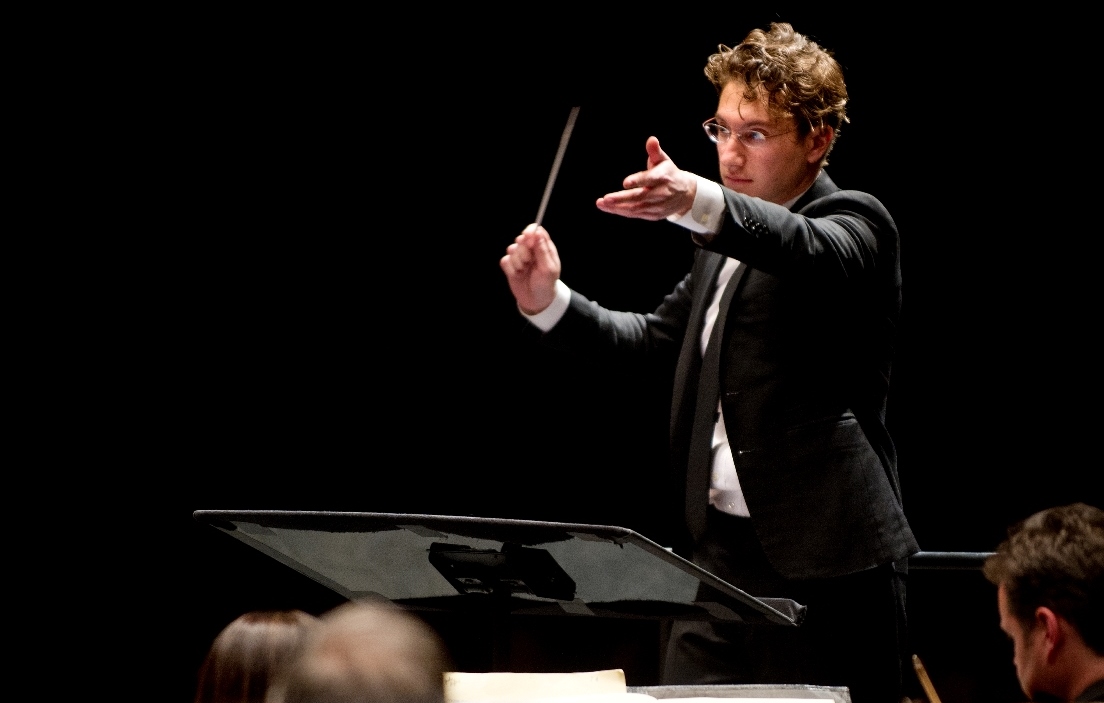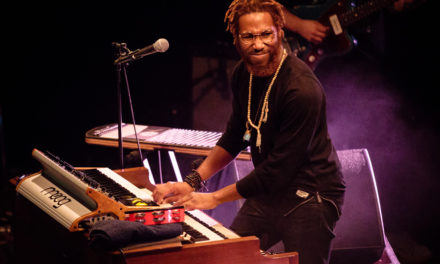Mahler’s Second
Teddy Abrams, Conductor
Kent Hatteberg, Chorusmaster
Celena Shafer, Soprano
J’Nai Bridges, Mezzo-Soprano
Review by Annette Skaggs
Entire text copyright © 2016 Annettte Skaggs. All rights reserved
J’Nai Bridges. © S. Richards Photography 2016
From the opening rat-a-tat-tat on the snare drums to begin a rousing and spirited Star Bangled Banner sing-a-long to the statuesque visage that Maestro Abrams commanded in the last note of Im Tempo des Scherzos in Symphony No. 2 in C minor, “Resurrection” by Gustav Mahler, the nearly sold out audience at Whitney Hall was entranced.
How appropriate it is that when the good Maestro arrived two years ago that he opened his freshman Louisville Orchestra season with Mahler’s First and now he begins his third year with Mahler’s Second, which he called quite possibly the greatest sequel in music.
Mr. Abrams shared with the audience a few nuanced observations about the piece, in that it contains a mythology – a story similar to what one hears within an opera; not in the words, but in the notes themselves. If you listen and notice the musical annotations, you would be hard pressed to disagree with that description. With movements that begin with Allegro maestoso. Mit durchaus ernstem und feierlichem Ausdruck and end in the aforementioned Im Tempo, there are a lot of emotions and musical imagery scattered throughout. And our Louisville Orchestra roused every one of them, as did the 200+ chorus of talented singers who lent voice to the evening.
The first movement, despite a weird echo vibrato in the double basses first strike, was deliciously dark. Tremolos in the lower register strings set the tone of the movement that carry into lighter sounds within the violins, winds and brass. The movement is almost funereal in its timbre, but towards the end there is a beautiful scale that shines a lovely light over the pall before we hear the light and luscious second movement, Andante moderato.
Within this movement, I could picture a serene and bucolic hillside where two people were engaged in an innocent game of hide and seek, enjoying the spring and life in general. Serenity and peacefulness. Perhaps the most enchanting part of this movement is the pizzicato plucking of the strings, giving the sound a bit of a folksy-air.
The third movement opens with an alarming strike on the tympani. That this movement is referred to as Scherzo is apropos; it is so filled with frenzy and controlled confusion.
Within the fourth movement, Urlicht, Sehr feierlich, aber schlicht, weaving seamlessly from the third movement, we get our first taste of the vocal aspect of the orchestration. In Mahler’s notes about the soloist he asked that the vocal “sound like a child dreaming as if in Heaven”. J’Nai Bridges’ interpretation of Mahler’s notes while singing “I am from God and will return to God” was lovely. While I didn’t hear a child-like sound from Ms. Bridges, I did hear a voice on the rise in the world of vocal music. Her sound is deep and sultry, similar to Kathleen Battle or Denyce Graves. Her voice certainly gave a much needed respite from the previous movements and I share the same opinion as many musical professionals that it is within this movement and the last that Mahler created some of his most beautiful work.
But just as this movement ended on a note of calm and serenity, the finale bursts out in a great flourish of sound. Maestro Abrams uses Mahler’s instructions for securing percussion and brass backstage and in the hall to create an ethereal sound that excites and entices the audience. Another technique Mahler employs here is using his massive choir in a way that not many others have done: a chorus singing pianissimo. What a fantastic sound a group of 200 individuals make as they sing so silently; beautifully done. And floating out of the chorus soprano Celena Shafer delivers a shimmering descant, as does Ms. Bridges.
And just as this mythological tale of life and death comes to a close, it is within this finale that one understands why it has been given the moniker, Resurrection Symphony. Mahler interpolates some of the most haunting melodies in tandem with grotesque and downright scary musical interludes to create one of the most moving symphonies in classical music.
During one of the most striking moments within the piece percussion is used in a way that I’ve not heard percussion used before (a special tip of the hat to that section of the Orchestra). There is such a cacophony of sound from these instruments that it left one in a flurry of breathlessness and audible delirium. When that section found its resolve and there was calm after the fiery storm I overheard an audience member whisper, “That was cool!” Yes indeed sir that was cool!!!
Bravi, Tutti!!!
Mahler’s Second
October 8, 2016
Louisville Orchestra
Kentucky Center for the Performing Arts
Whitney Hall
501 W. Main St
Louisville, KY 40202
louisvilleorchestra.org
Annette Skaggs is heavily involved as an Arts Advocate here in Louisville. She is a freelance professional opera singer who has performed throughout Europe and in St. Louis, Cincinnati, Boulder, Little Rock, Peoria, Chicago, New York and of course Louisville. Aside from her singing career, she has been a production assistant for Kentucky Opera, New York City Opera, and Northwestern University. Her knowledge and expertise have developed over the course of 25+ years’ experience in the classical arts.





